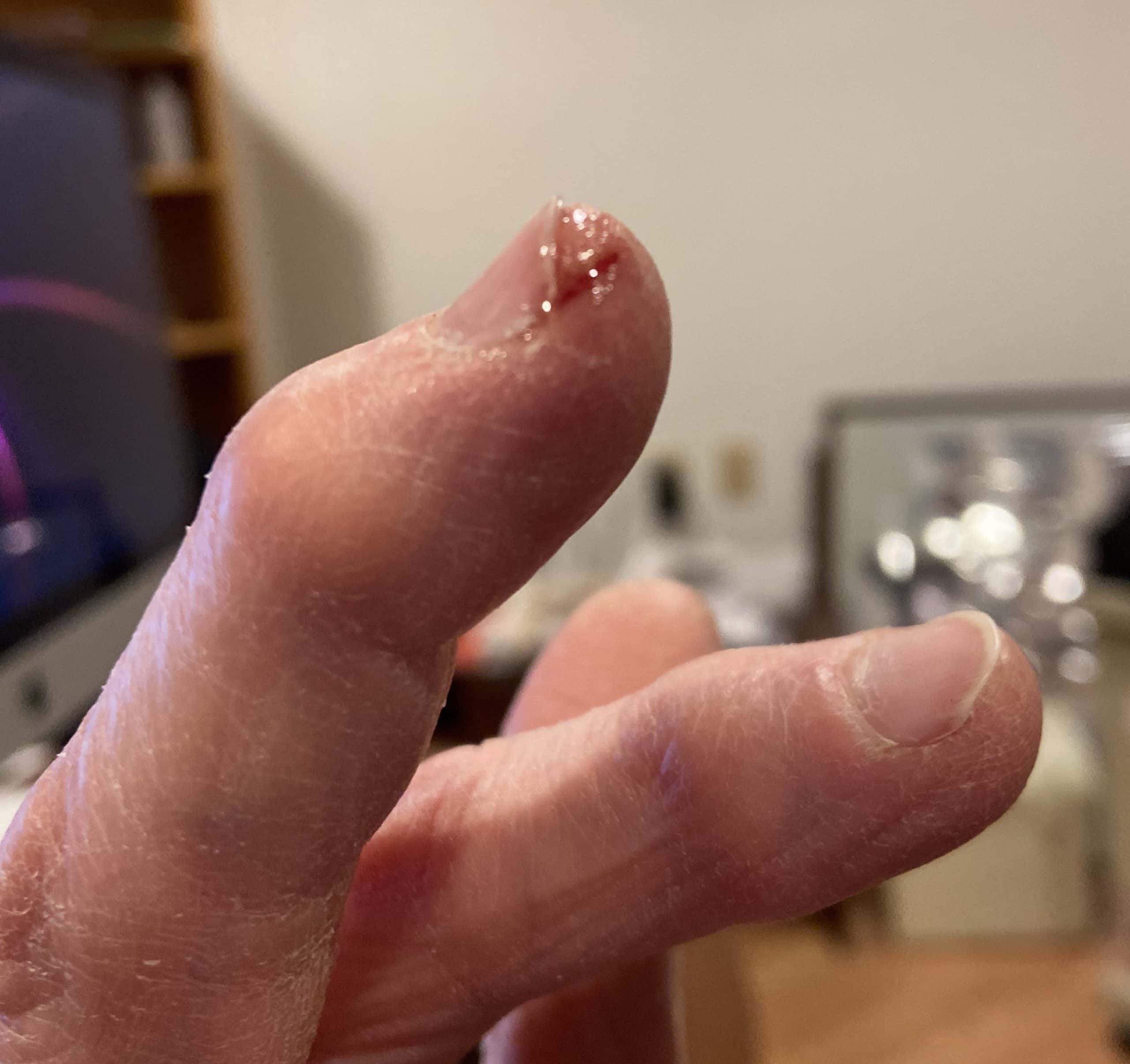
Painful splits on fingers and thumbs can make it hard to fasten buttons, type or even hold a pen. We mostly hear from readers about this problem during the colder months. Recently, many more people have developed hand eczema as a result of all the hand-washing they are doing during the COVID-19 pandemic (Journal of the American Academy of Dermatology, April 16, 2020). A reader recently sent a testimonial about a product that helped this type of eczema on fingertips, and we thought you might like to read about it.
Hand Lotion to Heal Eczema on Fingertips:
Q. I’ve had eczema on my fingertips for about 15 years. It’s worse in the winter.
I’ve tried OTC cortisone creams and prescriptions from my dermatologist. With these, the cuts on my fingertips would eventually heal, but I felt as though I was fighting a losing battle. As soon as one finger would start to heal, another would develop a painful slit.
About two months ago, I asked a local pharmacist for anything that could help this condition. She recommended O’Keeffe’s Working Hands. I bought some and used it every single time after washing my hands. Within a week, the slits on all of my fingers were completely healed.
Now I use it a couple times a day, and my fingers remain completely healed and pain free. If my fingertips start to feel a little rough, I increase my usage until they are soft again.
Other Approaches for Split Fingertips:
A. We have heard from other readers that O’Keefe’s Working Hands can help heal cracked fingertips. Among many other ingredients, it does contain urea, which can improve the barrier function of the skin. Dermatologists often recommend greasy ointments, the better to keep moisture in and promote healing.
Some people have reported great success sealing fingertip cracks with household instant glue or New-Skin Liquid Bandage. Sealing also allows eczema on fingertips to heal more quickly.
Citations
- Singh M et al, "Overzealous hand hygiene during COVID 19 pandemic causing increased incidence of hand eczema among general population." Journal of the American Academy of Dermatology, April 16, 2020. DOI: 10.1016/j.jaad.2020.04.047

